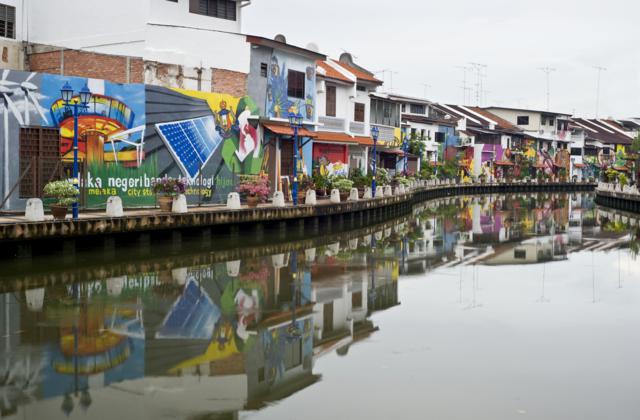Article and photos:Le Thu
About 150 km from the capital Kuala Lumpur, Malacca lies next to the river of the same name with pretty little wooden houses and many structures that have stood the test of time. The Strait of Malacca was once a colony of the Netherlands and the United Kingdom. Chinese Malaysians living on the islands of Java and Sumatra came to Malacca to trade silk and ceramics with Indian and European merchants. From there, Indians and Arabs spread Islam and Hinduism to this land.

Peaceful and colorful city
If you come to Malacca, you should take a trip on a trishaw (three-wheeled rickshaw) to tour around the city. The trishaw is a “specialty” of Malacca that impresses tourists not only because of its cheerful decoration with flowers, dolls, and even cute teddy bears, but also because of the vibrant music coming from the speakers attached to the vehicle. The car took me for a ride and stopped at the foot of the hill. I walked up to the top of St. Paul’s Hill to see almost the entire old town with its sights and relics that act as a mirror reflecting the history of Malaysia.

Right at the foot of the hill, on the left is the red Staddhuys building with its white Dutch doors, which in the 17th century was the official residence of the Dutch governors and is now the Ethnographic Museum. Nearby is a fountain with an English-style stone pillar commemorating Queen Victoria. People often have the habit of throwing a few coins into this small pond to pray for good luck in the new year. It is the cultural diversity of Malacca that attracts people here the most. Everything exists together innocently and harmoniously: here is the Portuguese square, there is Chinatown, the Sultan's palace stands next to the Dutch fort, the mosque is not far from the Catholic church.
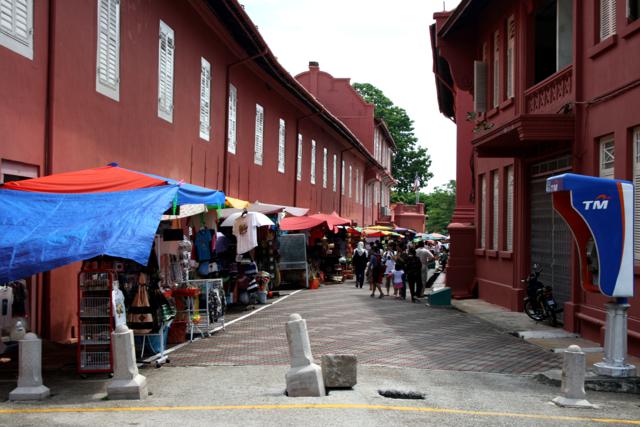
Dutch Square with its red brick streets shaded by trees and a dark red church imbued with the past. A church built in the typical European architectural style, painted red like the Catholic churches originating from this continent, reminds of a time when the Dutch lived here. The red color covers the town hall, the Catholic church, the Melaka museum, the castles and the villas... making this place often referred to by another name, Red Square.
City of museums
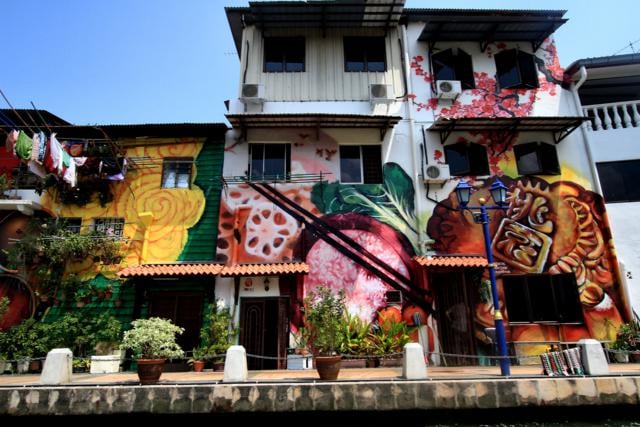
If you love museums, Malacca is the ideal place for you because this place is also considered a museum city. The Independence Memorial Museum currently holds documents related to the period when Malaysia escaped from colonialism and became an independent country. Are you a stamp collector? The stamp museum here not only has a full collection of stamps from Malaysia in the past but also from countries such as Spain, China, Portugal... I bought a set about Malaysian traditional dance and a set about Malacca city as a souvenir of this place.

Next to it is the museum of ancient artifacts of the city. I enjoyed looking at the iron iron that people used to put coal in to iron clothes in ancient times. Or the ceramic vases that were shipped here from China…
The Maritime Museum was built as the Portuguese galleon Flora de la Mar which sank off the coast of Malacca. The museum still houses artifacts related to maritime history. For history buffs, you will need to spend days to explore all the stories here.
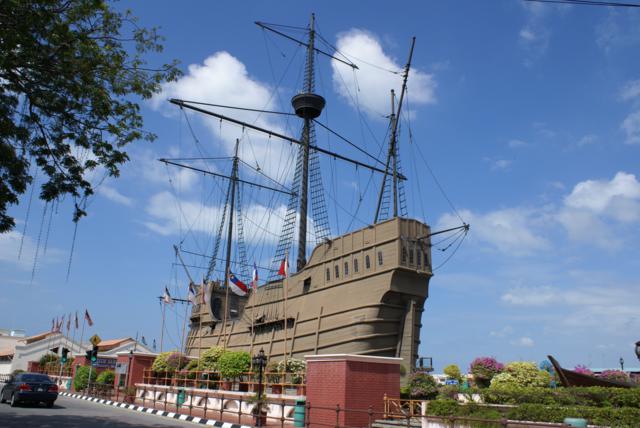
Another interesting thing for those who love wall art is that you will be able to admire the ancient houses with colorful murals like stories told in pictures, partly showing the diverse architecture of this place, which is likened to Venice in the East.
“Little China” in the heart of Malacca
Just a 50m walk from the museum area is the bustling and colorful Chinatown. This neighborhood is considered typical in scale, architecture and antiquity. I was fascinated by the Chinese-style houses with lanterns in front of the gate, small tea shops, Chinese restaurants with famous roast duck and dumplings…
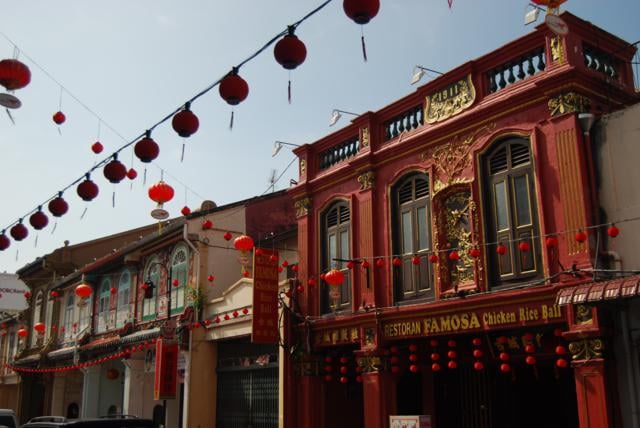
I stopped in front of an ancient temple with strong Chinese architecture, still with dragon carvings on the door, large incense sticks emitting a fragrant scent, monks chanting Buddha's name; outside the gate a little girl in a cheongsam stood taking pictures. It seemed that wherever the Chinese went, they left their architecture there. The Chinese shopping area was very bustling with the calls of customers, the bargaining, the buying.
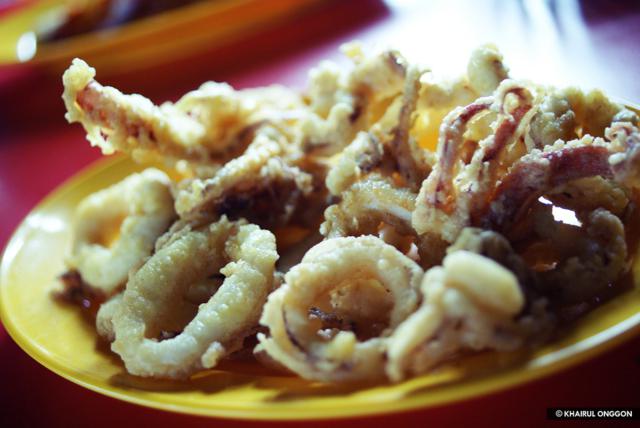

For me, the Jonker Walk old town is a large picture that perfectly combines the image of ancient Chinese temples with elaborately carved curved roofs, with simple but sacred arches in mosques, and occasionally dotted with ancient European church spires. It is not too much to call this a city of art because every little detail here carries a unique idea. There is no need for elaborate, expensive and grand works of art, it is the works of art associated with the streets and daily life such as murals combined with installation art like stories told in pictures, decorative images outside... that have turned Malacca into an impressive living art exhibition area.
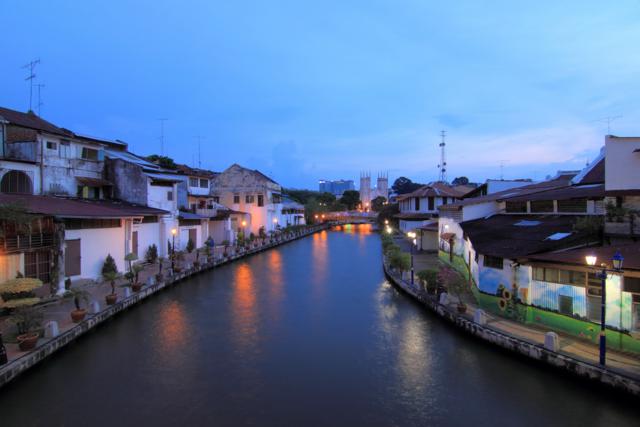
It is easy to see that Malacca is a gathering place for artists. Every house, cafe or shop in Malacca is an art gallery, decorated with its own style and personality, with all genres from traditional Chinese to contemporary art…

Coming to Malacca, there are two activities that I in particular and tourists in general especially like besides exploring ancient relics, which are collecting traditional items and enjoying fresh seafood at the bustling square of Ujong Pasir - where many people of Portuguese origin live. Finally, take a boat down the river, see the works... then you will be interested and understand more about Malacca.
More information:
Travel
From Ho Chi Minh City to Kuala Lumpur by AirAsia flight. From Kuala Lumpur by bus to Malacca takes about 1.5 hours.
Accommodation
4-star Equatorial Hotel room rates from $40-$100/night
5-star Casa del Rio hotel right on the river, prices from $100/night
Asia Heritage
Cuisine
There are countless restaurants in this place for you to choose from, typically:
Ikan Bakar with grilled fish
Kuih-muih with traditional cakes
Lemang - rice cooked in bamboo tubes in the traditional style
Asam Pedas with Malaysian curries
Sightseeing
Dutch Square
Portuguese Fort
Baba and Nyonya Museum to understand the lifestyle and architecture of Malaysian houses. Open from 10:00-12:30, afternoon from 2:30-4:30
Cheng Hoon Teng Temple
Masjid Kampung Hulu Mosque, built in 1728
Porto de Santiago Fortress
Malacca Art Gallery.
Shopping
Jusco Store
Martin Gallery for visitors who love woodwork
The Orangutan House with funny shirts
Beyond Treasures (57 Jonker) shop with handmade souvenirs
Pasar Malam Night Market starts at 9pm
Renting a Triashaw for 25-30 minutes costs about 10 Ringgit (40,000 VND).





